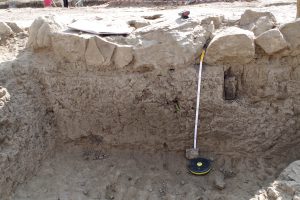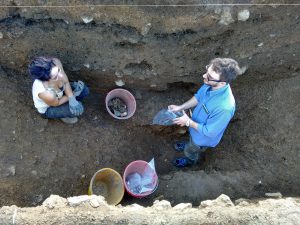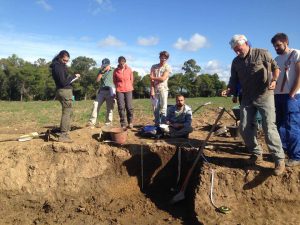The excavation campaigns carried out at Vetricella (Scarlino) and Carlappiano (Piombino) are coupled with geoarchaeological and archaeobotanical investigations (Fig.1). During this phase the main aim of Geoarchaeology is to support archaeologist to define stratigraphy and environment of deposition of sediments or formation of soils. Moreover, it helps to define the influence of human activities in the formation of layers and strata. These sets of information, coupled with field surveys carried in the surrounding areas, will give a picture of the site formation, frequentation and abandonment processes, together with the changing landscapes and environments. Stratigraphy was approached with sedimentological methods, that is macro and mesoscopic facies analysis and distribution, and microstratigraphical methods by means of sampling of undisturbed sediment or soil samples for thin sections preparation and observation under optical microscope. The surrounding areas were investigated with field geomorphological analysis and cartography.

In Vetricella (Fig.2) geoarchaeology mainly focused on the stratigraphies excavated within the circular ditches around the site and minor ditch-like features excavated soon outside the walls. In both cases the sedimentary filling show natural and anthropic layers.
In Carlappiano (Fig.3) detailed geoarchaeological investigations were made in order to understand the succession of natural layers and soils (dunal sands and lagoonal clays) and their relationships with anthropic layers, structures and materials (Fig.4).
In both sites, the layers rich of charcoals, ash, other fire-related materials and palaeobotanical rests have been sampled for archaeobotanical purposes. This is crucial to understand the use and

exploitation of natural resources and the possible relationships with changing vegetal landscape (Climate? Economy? Other?).
Since the changes of the vegetal landscape are often associated to changes of the physical landscape, the archaeobotanical and geoarchaeological investigations are quite often complementary and carried on together.




